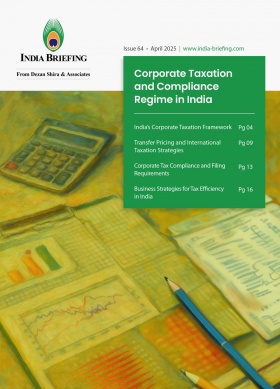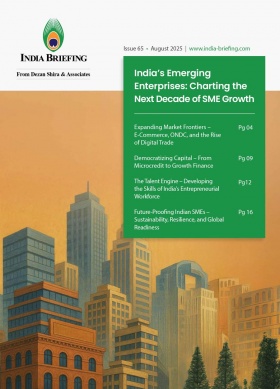India’s New Income Tax Act, 2025 Notified: Key Changes and Implementation Timeline
India has formally notified the Income Tax Act, 2025, marking a significant overhaul of the country’s direct tax regime. Scheduled to take effect from April 1, 2026, the Act replaces the Income-tax Act of 1961, which had governed India’s taxation framework for over six decades.
India officially notified the Income Tax Act, 2025, on August 22, 2025. The legislation was cleared by Parliament earlier on August 11 to modernize and streamline India’s direct tax framework. The Act, which replaces the six-decade-old Income-tax Act of 1961, received presidential assent on August 21 and was subsequently published in the gazette by the Union Ministry of Law and Justice.
As per the notification, the new law will take effect from April 1, 2026, unless a different date is specified.
The central government tabled the revised Income Tax Bill in the Lok Sabha (lower house of the Parliament) on August 11, 2025. The revised version of the proposed legislation carries most of the 285 recommendations that were put forward by the Select Committee and through public feedback.
Key provisions under Income Tax Act 2025
The central government has accepted nearly all of the Select Committee’s suggestions. It also notes that feedback from various stakeholders has been incorporated to refine the language and ensure the provisions convey their intended legal meaning with greater precision.
New tax regime under Clause 202(1)
The revised income tax legislation introduces the framework for the new tax regime under Clause 202(1). This tax regime, applicable to individuals, Hindu Undivided Families (HUFs), and other taxpayers, lays down the income tax rates and slabs as announced in the Union Budget 2025 and will serve as the basis for computing tax liabilities in a more straightforward manner.
|
Income Tax Slab—New Regime |
Tax Rate |
|
INR 400,000 |
No tax |
|
INR 400,001 to INR 800,000 |
5% |
|
INR 800,001 to INR 1.2 million |
10% |
|
INR 1,200,001 to INR 1.6 million |
15% |
|
INR 1,600,001 to INR 2 million |
20% |
|
INR 2,000,001 to INR 2.4 million |
25% |
|
Above INR 2.4 million |
30% |
Source: India Briefing
Income tax rebate under Section 87A provisions
The provisions relating to the Section 87A rebate from the Income Tax Act, 1961 are carried forward and included under various clauses in Chapter IX of the updated income tax bill. These provisions explain how the rebate is applied when computing income tax.
The rebate is calculated on the income tax payable before deductions. It is available only to resident individuals in India and is subject to certain income limits.
- Under the existing limit: A full rebate of income tax payable, or INR 12,500 (whichever is lower), is allowed if the total income does not exceed INR 500,000.
- Under the new tax regime (Clause 202(1)): A rebate of 100 percent of income tax payable, or INR 60,000 (whichever is lower), is available.
|
Income tax rebate condition |
Existing limit | New tax regime (Clause 202(1)) |
|---|---|---|
|
Maximum rebate |
INR 12,500 or full tax payable (whichever is lower) | INR 60,000 or full tax payable (whichever is lower) |
|
Income eligibility for full rebate |
Total income ≤ INR 500,000 | Per new slab rates, full rebate available within eligible income range |
For incomes above INR 1.2 million, if the tax payable exceeds the amount by which the total income is greater than INR 1.2 million, the rebate will equal the excess amount.
In all cases, the rebate cannot exceed the income tax payable per the slab rates in Clause 202(1).
Eligibility for Section 87A rebate
The rebate under Section 87A is available only to individuals who qualify as residents of India. It is not applicable to partnership firms, companies, or non-resident individuals.
Income exclusions from Section 87A rebate
Certain categories of income are excluded from this rebate. Specifically, you cannot claim the Section 87A rebate on:
- Long-term capital gains (LTCG) from the sale of listed equity shares.
- LTCG from equity-oriented mutual funds is currently taxed under Section 112A of the Income Tax Act, 1961.
These types of capital gains are subject to a fixed tax rate of 12.5 percent, and the rebate benefit does not apply to this portion of the tax liability.
Other tax reliefs and compliance easing
India’s Income Tax Act, 2025 also introduces clearer provisions for tax deductions on commuted pensions—lump-sum pension payments—received by certain taxpayers. This applies to pensions drawn from approved funds listed in Schedule VII of the bill (for example, the LIC Pension Fund).
In the previous draft, this exemption was not explicitly mentioned, prompting the Parliamentary Select Committee to recommend its inclusion.
The tax law also delivers broader compliance relief. It removes the levy of Alternate Minimum Tax (AMT) on limited liability partnerships (LLPs), eases earlier restrictions on charitable trusts, and relaxes provisions related to transfer pricing (TP), including the definition of “Associated Enterprise” to which these rules apply.
Select Committee’s recommendation on income tax bill
In July, the Select Committee comprising 31 Members of Parliament (MPs) submitted a comprehensive report spanning over 4,500 pages. The document outlines a wide range of recommendations for refining the draft Income Tax Bill.
One of the most notable suggestions is the introduction of greater flexibility for tax refunds, even in cases where returns are filed after the due date. The committee also recommended reinstating the Section 80M deduction for inter-corporate dividends, a move that could benefit corporate taxpayers by reducing double taxation on distributed profits.
Here are some of the other recommendations put forth by the Select Committee on the Income Tax Bill, 2025:
- Advance NIL-TDS (tax deducted at source) certification: Enabling individuals with no tax liability to secure a NIL-TDS certificate in advance. At present, late filing of TDS returns attracts a fee of INR 200 per day under Section 234E of the Income Tax Act, 1961.
- Vacant property tax relief: Eliminating the notional rent-based tax levy on unoccupied properties.
Clarity in property income calculations – Applying the 30 percent standard deduction after deducting municipal taxes and extending home loan interest deductions to rented properties. - Procedural improvements: Revising advance ruling fees, addressing TDS on provident fund withdrawals, and clarifying the scope of penal provisions.
- Micro, small, and medium-sized enterprises (MSME) definition alignment: Adopting the definition under the MSME Act for consistency. Micro and small enterprises are classified based on investment in machinery and annual turnover.
Technical and linguistic corrections: Rectifying numbering errors and incorrect cross-references. - Property classification clarity: Modifying the term “occupied” to avoid confusion between residential and commercial usage.
- Pension benefit expansion: Extending the commuted pension deduction to individuals who are not former employees.
Income Tax Act, 1961, vs. Income Tax Act, 2025: Key differences
The Income Tax Act, 1961 has served as the basis of India’s tax system for over six decades. Over the years, it has undergone numerous amendments and updates, which, while addressing specific needs, have also made the law complex and challenging for the average taxpayer to navigate.
The Income Tax Act, 2025 seeks to replace this framework with a modern, streamlined structure. It comprises 536 sections and 16 schedules and introduces a unified term, “Tax Year,” in place of the earlier distinction between “Previous Year” and “Assessment Year.”
The latest tax law eliminates redundant and contradictory provisions to reduce disputes and enhance legal clarity. It also grants the Central Board of Direct Taxes (CBDT) greater authority to frame rules suited to the needs of a digitally driven economy, ensuring the legislation remains responsive to evolving business and compliance requirements.
Summary
About Us
India Briefing is one of five regional publications under the Asia Briefing brand. It is supported by Dezan Shira & Associates, a pan-Asia, multi-disciplinary professional services firm that assists foreign investors throughout Asia, including through offices in Delhi, Mumbai, and Bengaluru in India. Dezan Shira & Associates also maintains offices or has alliance partners assisting foreign investors in China, Hong Kong SAR, Vietnam, Indonesia, Singapore, Malaysia, Mongolia, Dubai (UAE), Japan, South Korea, Nepal, The Philippines, Sri Lanka, Thailand, Italy, Germany, Bangladesh, Australia, United States, and United Kingdom and Ireland.
For a complimentary subscription to India Briefing’s content products, please click here. For support with establishing a business in India or for assistance in analyzing and entering markets, please contact the firm at india@dezshira.com or visit our website at www.dezshira.com.
- Previous Article Winners and Losers: India’s Online Gaming Bill Elevates E-Sports, Bans Real-Money Gaming
- Next Article India’s Passport Rules 2025: Key Changes You Need to Know








